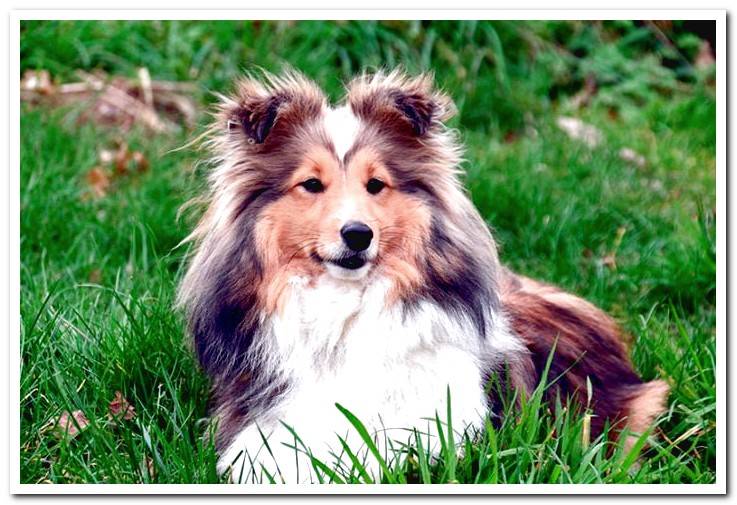
Knowing the level of purity of a copy is not a relevant detail for your daily well-being. However, it is an important fact if you intend to participate in dog shows or become a breeder. So how do you know if my dog is purebred?
There are documents that prove it, but these are not always available. In this case, there are other ways to know if a dog is purebred in Spain or not. Let’s see in detail how to find out.
Index of contents
- 1 What is a dog’s pedigree?
- 2 Dog breeders in Spain
- 3 How to get a dog’s pedigree in Spain
What is a dog’s pedigree?
When we refer to a dog’s pedigree we must think of two things. On the one hand we have the biological ancestry of the specimen, which refers to its inherited physical characteristics as part of a particular breed.
This is why a dog is said to be “of good pedigree” when meets the anatomical and personality criteria established in the breed standard, like the black and tan color in the German Shepherd or the fallen cheeks of the Bulldog.
These features are usually reflected in a document, which is also known as a “pedigree” and which collects the following information:
- Genealogy and number with which the dog has been registered
- Birthdate
- Date on which it was registered and date of issue of the document
- Copy name
- Race
- Variety
- Sex
- Colour
- Championship Titles
- Microchip number
- Breeder’s name
- Date of transfer of ownership
- Owner’s name and address
- Authorized signatures of the Royal Canine Society of Spain
- Name and registration number of the predecessors
The pedigree also proves that the dog is purebred without unwanted crossings between its ancestors. All this according to the information that the breeders provide to the RSCE when requesting the registration of their litters in the Spanish Origin Book (LOE).
To achieve this certificate the purity of that individual’s race must be demonstrated for several generations. Those in charge of managing and granting them are the official federations of each country. In Spain, the entity that determines when a dog is a pure breed is the Royal Canine Society. If a dog has been acquired from a professional breeder, they usually give you their pedigree as well.
Dog breeders in Spain
The best way to ensure that a dog is purebred is that it comes from a quality breeder, that has adequate, clean and spacious facilities, and that ensure the well-being of puppies and adult dogs that live there.
These establishments usually take charge of registering the individuals of a litter in the corresponding registers and obtaining the documentation that confirms their purity. The cost of these certificates is often included within the sale price.
Likewise, professional breeders will offer you a deworming and health certificate, signed by a veterinaryn. This guarantees the good health of the puppy. You should also receive information and advice on the characteristics of the breed, its main needs and how to properly care for the specimen, especially in its first months of life.
The minimum age to get a puppy varies between the different Spanish autonomous communities. In some it is possible to do it after 6 weeks and in others after two months. However, the recommendations of the weaning of the mother are different according to the breed, so you should consult with a veterinaryn or with the managers of the hatchery.
And what happens if our partner is a gift or we cannot access any document that validates its purity? If we think that the dog meets the standards and we want it to have a pedigree, it is possible to guarantee its purity through a somewhat more complex procedure.
How to get a dog’s pedigree in Spain
If you consider that a dog meets the official standards of a breed and you want to achieve its pedigree, you must process its initial registration with the Royal Spanish Canine Society and enroll you in a national or international exhibition recognized by the RSCE. Remember that the dog must be over one year old and have the required microchip.
In the contest he will be examined by experts, who will determine if he is of pure race. For this they will evaluate aspects such as the morphology of its head, its body and the characteristics of its fur; They will also analyze how you walk and whether your temperament is as expected.
In case of being considered a pure horse, you will be awarded the Breed Certificate and they will enroll you in the Spanish Book of Origins as the first in his family tree. However, pedigree is only granted after two generations of purebred. Once the specimen has had certified grandchildren as pure, both he and his offspring will achieve the pedigree.
Finally, remember that official standards are often more stringent than what you can see with the naked eye and it is possible that your dog is not 100% purebred. In such circumstances ask yourself: is a thoroughbred dog more affectionate, more attentive, or more intelligent than one who is not? Surely your four-legged companion will not care so much about testing his genealogy as making you happy and playing alongside you.
